Looking to ride a bicycle on Cape Cod? There's some good news, and some bad
Six bicyclists have died in accidents on Cape Cod in the last 10 years.
Another 82 bike crashes resulted in serious injury. In total, during the 10-year span, there have been nearly 2,000 cyclist crashes on the Cape, according to figures from the state Department of Transportation.
"It’s dangerous out there,” said Jonathon Lamson, a Hyannis resident who rides his bicycle daily as a means of getting around.
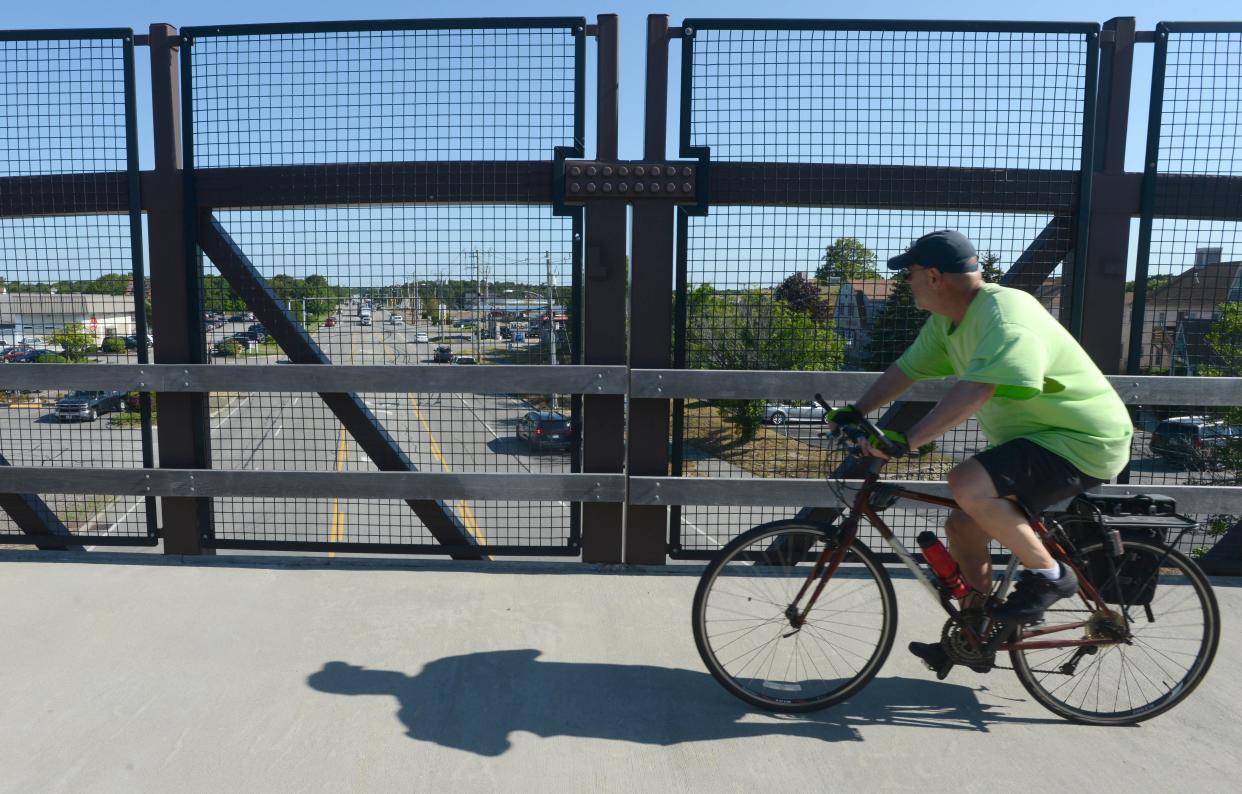
Lamson was sitting on a curb waiting for a bus at the Falmouth Mall as he spoke, his bicycle lying on his legs.
A few months ago, he was hit by a car on Route 28 even though he had a flashlight on his bicycle. Luckily, he wasn’t injured.
The number of accidents is simply too high, said Steven Tupper, deputy director of transportation at the Cape Cod Commission.
Nearly 2,000 cyclist crashes over last decade
“We still have a ways to go in terms of making bicycling safe across the region," Tupper said. "America has a car culture. What we’re challenged with now is adapting a system that in many respects was developed for the automobile and is not well-suited for those other modes of transportation that are out there today.”
More: Key decision in lawsuit by Cape Air employee fired from Provincetown airport duty
The crash numbers, provided by the state, are likely an underestimate since many bicycle crashes go unreported, Tupper said.
Nearly 80% of crashes involving a bicycle or pedestrian from 2012 to 2017 resulted in a minor injury, according to data from the Cape Cod Commission. That 80% drops to 25% when looking at car crashes not involving a bicycle or pedestrian during the same time frame.
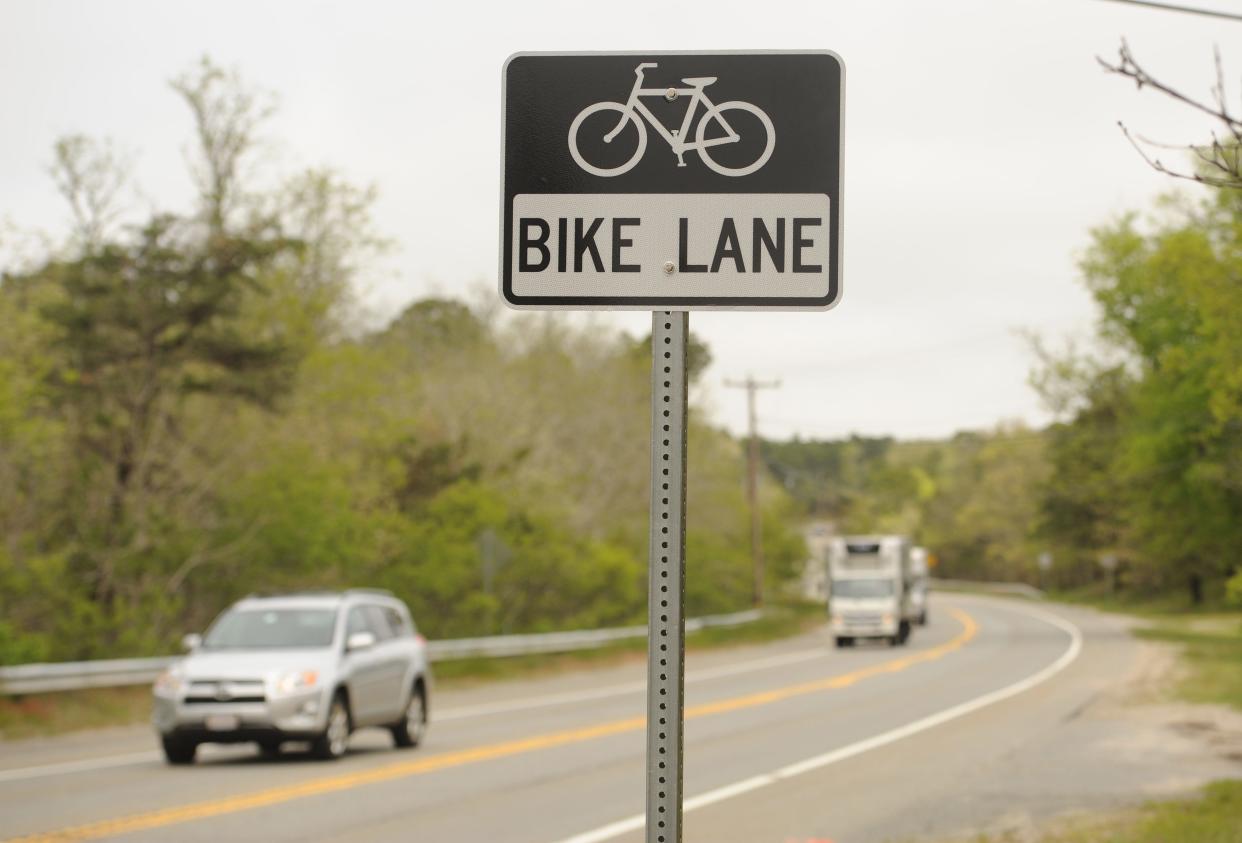
Likewise, the percentage of fatalities for accidents involving a bicycle or pedestrian was 2.3%. That 2.3% drops to 0.3% for accidents not involving a bicycle or pedestrian.
Those numbers may be worrisome, but Galen Mook, executive director of MassBike, a nonprofit advocacy group for bicyclists, said riding a bicycle is not as dangerous as it seems.
The state typically has fewer than 10 bicycle-related fatalities per year, as compared with more than 600 motorist deaths.
More: More than just swimming: What to do at Cape Cod National Seashore that's not at a beach
Streets are for people using all forms of transportation, Mook said.
"They're not for cars," he said.
Still, road users like bicyclists and pedestrians need to be protected, especially since they aren’t surrounded by steel and airbags like motorists, he said.
On Cape Cod, bicycle riders often are tourists, J-1 visa students, young people and those with low incomes, Mook said.
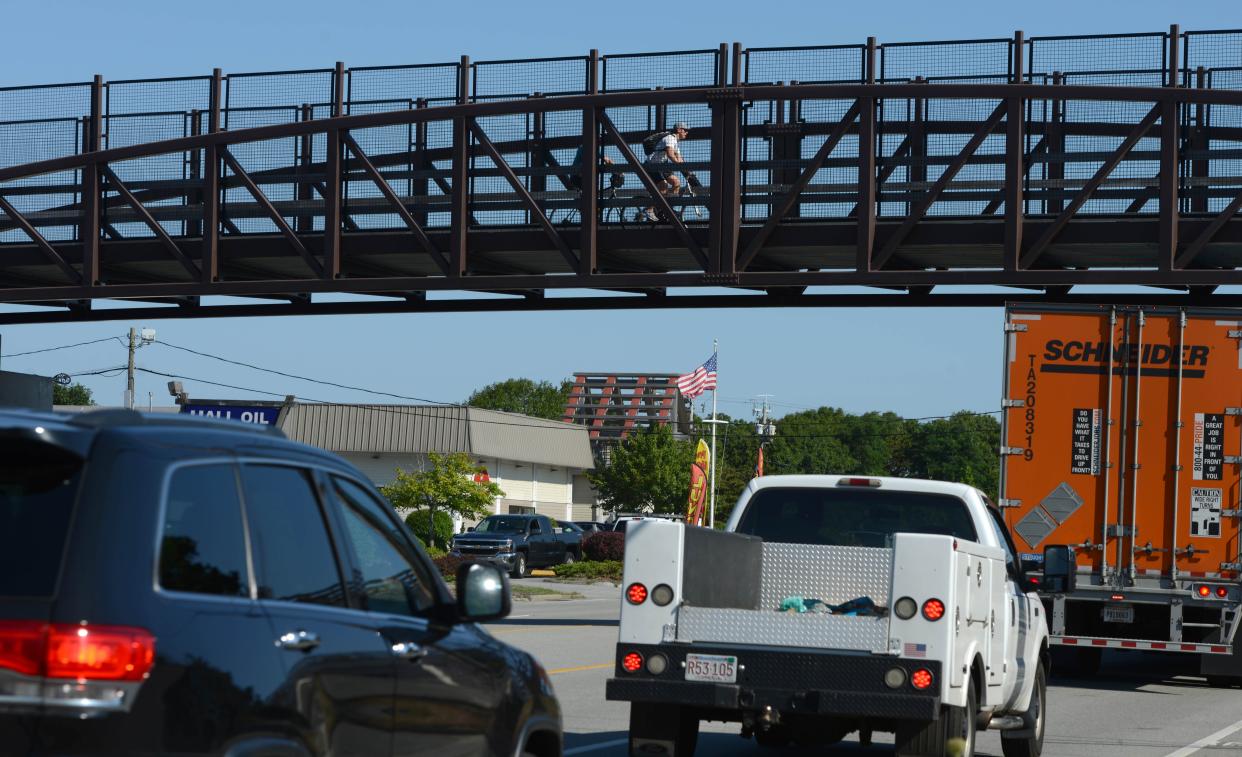
“Not everyone on the Cape is able to have a car,” he said. “We need to be able to afford them the ability to walk and bike safely for many miles on the Cape.”
Three bicyclists deaths on Cape in last 10 years
Lorraine Hurley died at Cape Cod Hospital on Oct. 2, 2015 after being struck by a vehicle on Stony Brook Road in Brewster as she was riding her bicycle. The driver of the vehicle was charged with speeding and negligent operation of a motor vehicle. Hurley was a holistic medicine doctor on Cape Cod.
Sixteen-year-old Miles Tibbetts was killed in August of 2013 as he was riding his bicycle on Route 6 in Wellfleet. He tried to cross a busy section of the highway and was not wearing a helmet when he was hit.
More: Provincetown perfect for bicycling; national cycling organizations agree
Yelmur Samarkham, a 21-year-old student from the Republic of Kazakhstan, died in July 2014 after being struck on Route 132 in West Barnstable while he was riding his bicycle. Samarkham was on the Cape on a J-1 visa.
Riding a bicycle on Cape Cod
Cape Cod has significant strengths when it comes to biking. But, there are challenges.
Bike commuters may find themselves on roadways without dedicated bike lanes, where they must share the road with busy traffic.
Route 28 is one example, says Tupper. The route — mostly two lanes — wraps around much of the Cape, connecting Bourne, down to Falmouth, and then all the way east to Orleans.
On the stretch of Route 28 in Falmouth, bicyclists can often be seen sharing the road with cars. The cyclists ride in the skinny strip of the shoulder, just inches away from cars. Cars tend to swerve slightly into the oncoming lane to make sure they don't graze cyclists. Sometimes, traffic will back up to allow cyclists to travel in the car lanes rather than the shoulder.
More: No wheels for J-1 seasonal workers on Cape
There are safe and protected areas for bicyclists, such as the Cape Cod Rail Trail. The Cape Cod Rail Trail is a 25-mile paved two-way trail that from the mid-Cape to Wellfleet.
But those protected areas don't connect the entire peninsula, Mook said.
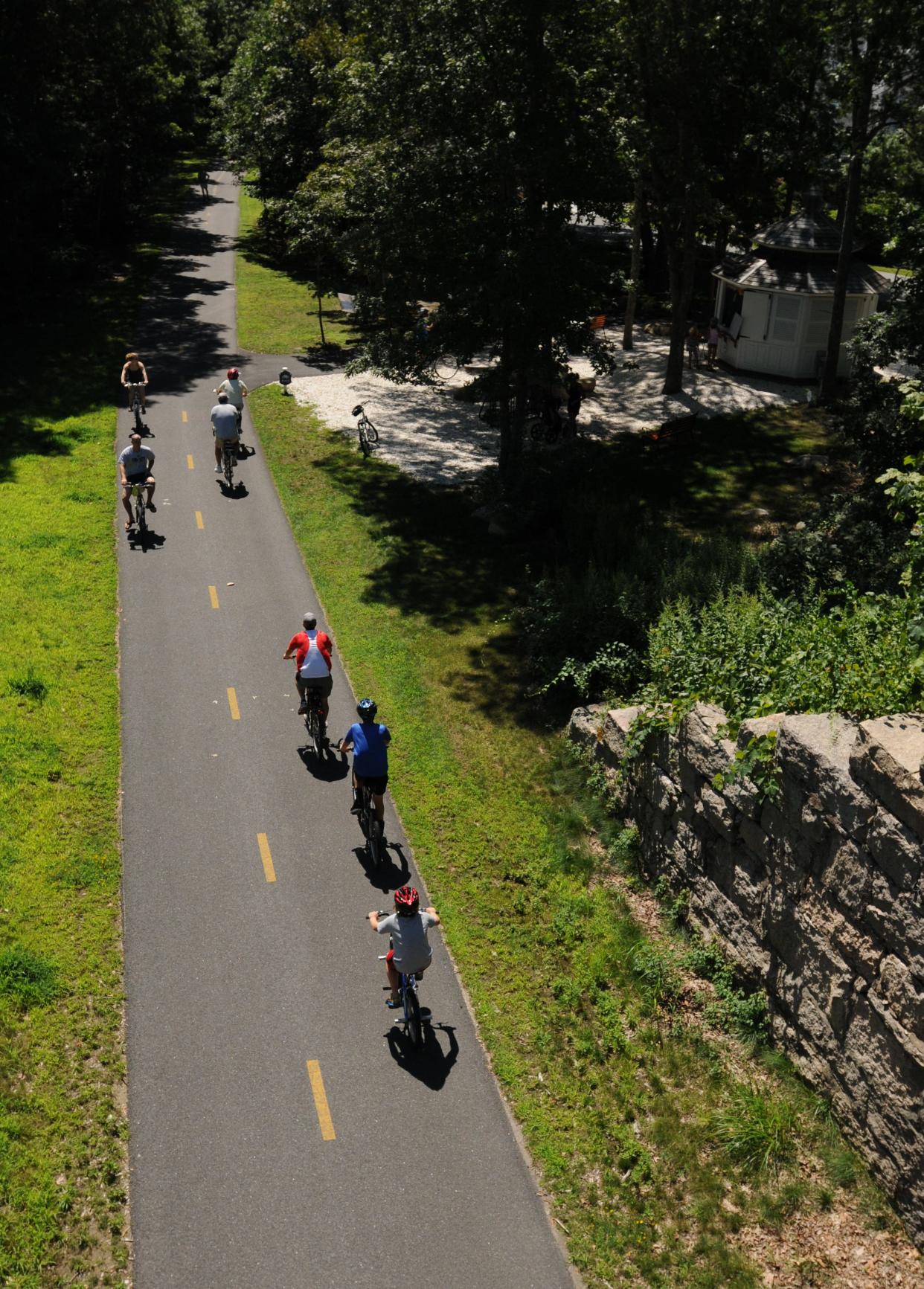
Some roads aren't wide enough for dedicated bike lanes.
Connor McLaren, a Falmouth resident, rides his bicycle to his job at a grocery store three times a week, mostly on local roads. His route is mostly hills and around five miles, he said.
McLaren feels safe while riding, but wishes there could be wider designated bicycle lanes throughout the town.
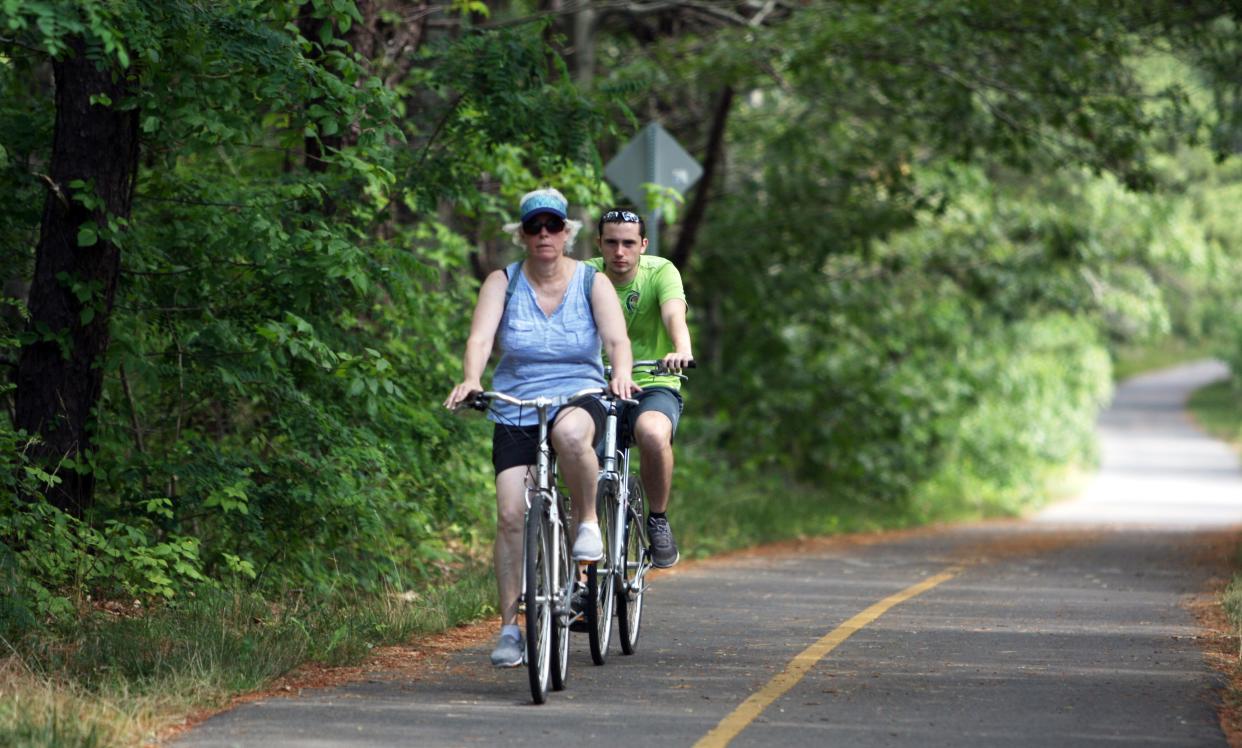
In the Cape Cod National Seashore, the three protected trails can still present dangers, particularly on the Province Lands Trail in Provincetown, such as steep hills, wind-blown sand, low tunnels and sharp curves.
How to improve bike infrastructure
Improving a roadway to make it safer for all users isn’t always about widening, said Tupper.
At times, it involves reexamining a road and making adjustments, such as making a car lane smaller to make more room for bicycles or putting in a crossing.
Other ways to protect bicyclists include slowing down traffic or building more networks of pathways to connect to the Cape Cod Rail Trail and other protected areas to business districts, Mook said.
More: Cape Cod residents stranded after bus service cuts. Here's what is going on
Mook also mentioned “Vision Zero,” a national campaign that believes fatalities on roads should not be accepted. Historically and presently, society has thought of all road accidents as inevitable.
“We need to change that mentality,” said Mook.
Local initiatives to make roads more inclusive for all users includes the “Complete Streets” initiative. Complete Streets uses state transportation funds to help towns improve streets for all users, including pedestrians and cyclists, Tupper said.
The Cape Cod Transportation Improvement Program has more than $275 million from state and federal funding at its disposal.
The Cape Cod Commission is also working with on the Cape Cod National Seashore, the towns of Wellfleet, Truro, and Provincetown on the Outer Cape Bicycle and Pedestrian Master Plan, a plan to create an interconnected bicycle and pedestrian facility linking the towns with the Cape Cod Rail Trail and the Seashore.
Change can encounter resistance
One the major challenges to making road improvements improvements is geography, said Katherine Jansen, a board member for MassBike and a member of the Falmouth Bicycle and Pedestrian Committee.
Is Cape Cod a safe place to ride a bike?
"It depends," said Jansen.
Where she lives in Falmouth, there are lots of safe roads. However in certain areas such as along Route 28, riding a bicycle can be very dangerous.
Many roads are surrounded by conservation or protected land, which can complicate expansion, she said.
More: Partnering with artists just one way Barnstable Land Trust preserves, shares open spaces
Effects on surrounding natural resources also need to be considered, said Tupper.
The fragmented government of the Cape can also make a regional approach to roadway infrastructure difficult. One town can lay down a bike lane, but once the road crosses a town line, officials have to get together to agree on what to do, Mook said.
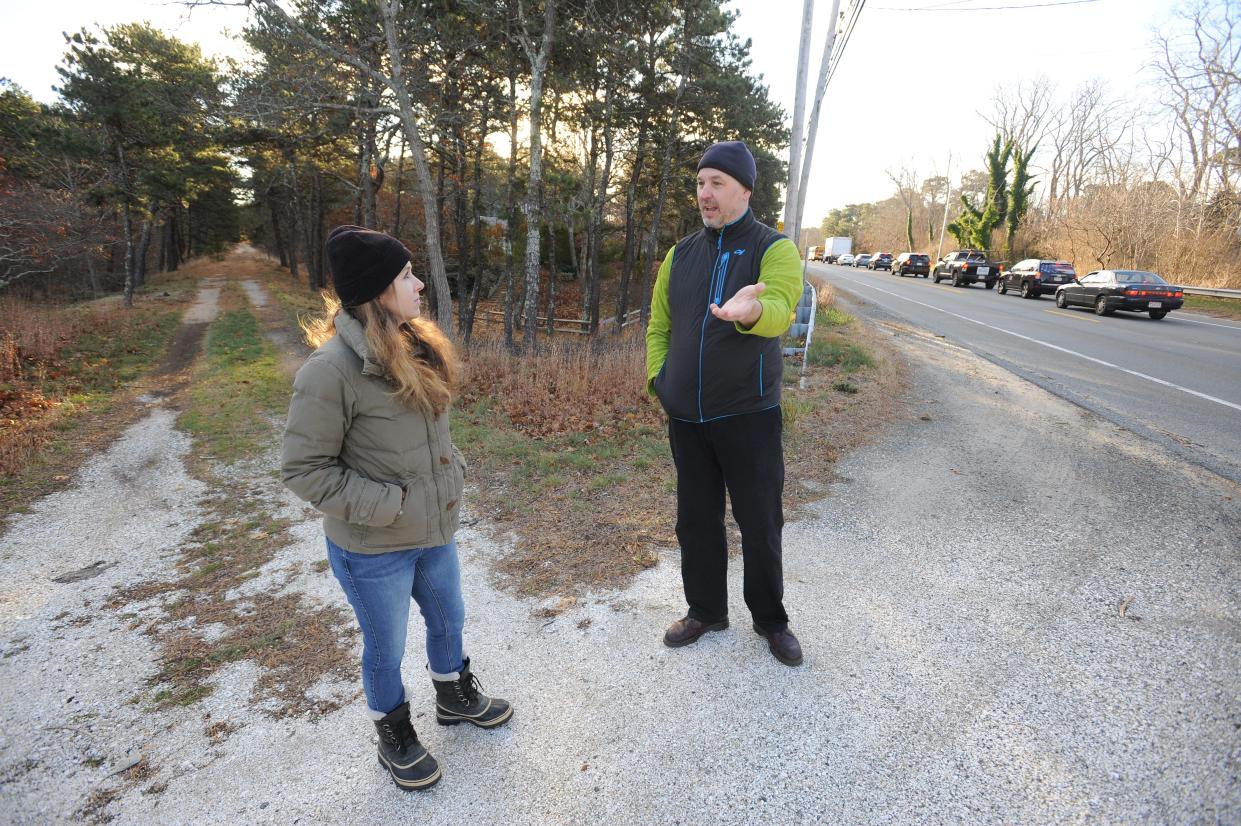
“It’s a challenge to get a regional context around widening roadways, or even getting rid of travel lanes if needed, on a regional stance, because where it might make sense in one area because of the business district, it doesn’t necessarily pertain to the whole corridor,” he said. “We all know that a bike route is only as safe as its weakest link.”
The public also needs to accept changes to their roadways, said Tupper. However, it is possible to improve roadway infrastructure without destroying the character of an area, he said.
Automobiles made Cape more accessible
The conversation around improving infrastructure for bicyclists can be difficult because Cape Cod is auto-centric. Because of the Cape's rural character, people often must travel many miles between town centers, Mook said.
More: Sagamore, Bourne bridges have brought prosperity, loyalty and now worries to Cape Cod
The invention of the automobile was a major boon to the Cape's tourist economy, as motorists were able to explore the entire Cape rather than being confined to fixed destinations. The construction of the Bourne and Sagamore bridges in the 1930s allowed motorists to access the Cape.
Many local bicycle and pedestrian committees have been calling for greater bicycle and pedestrian safety.
Improving bicycle infrastructure also benefits municipalities by bringing in additional revenue to the town and it benefits motorists by reducing traffic, Jansen said.
“How do we get people to share the road is a million-dollar question,” she said.
This article originally appeared on Cape Cod Times: Riding a bike on Cape Cod can be a fun prospect, but there are dangers
